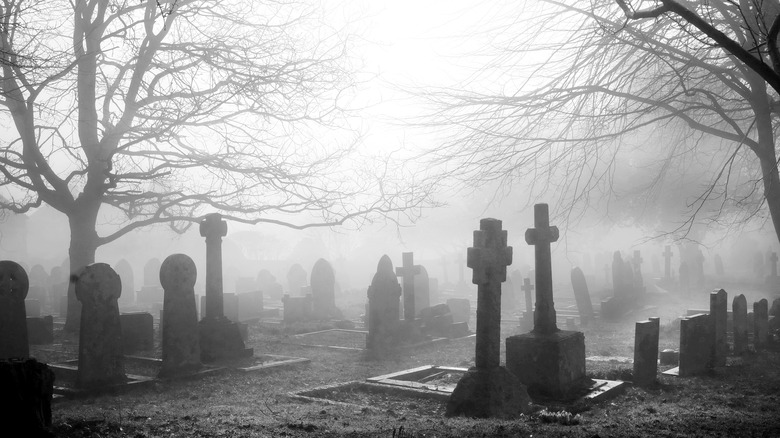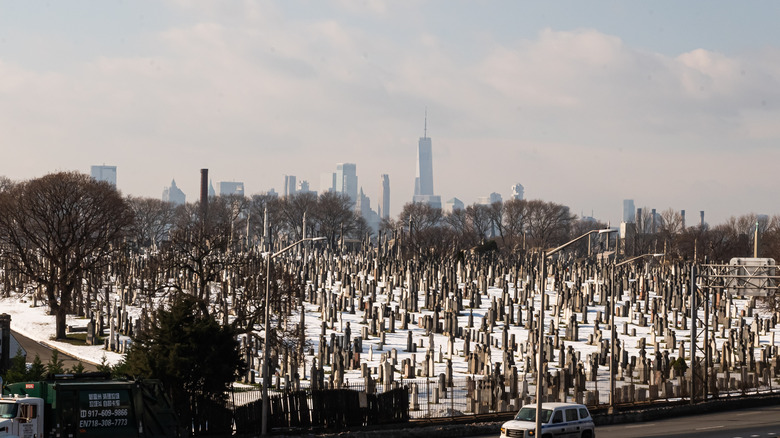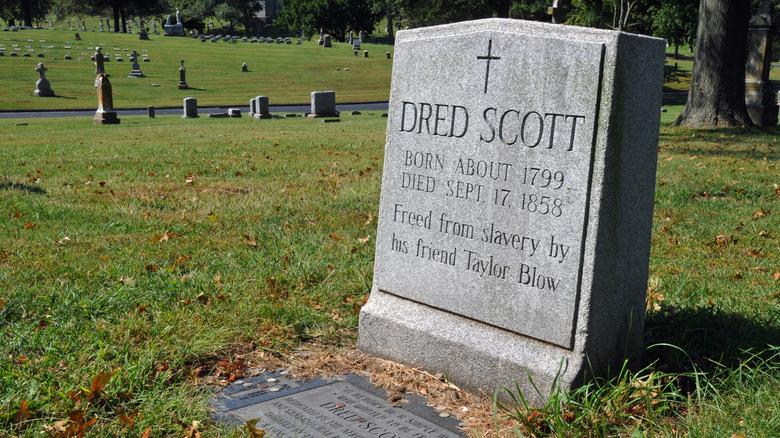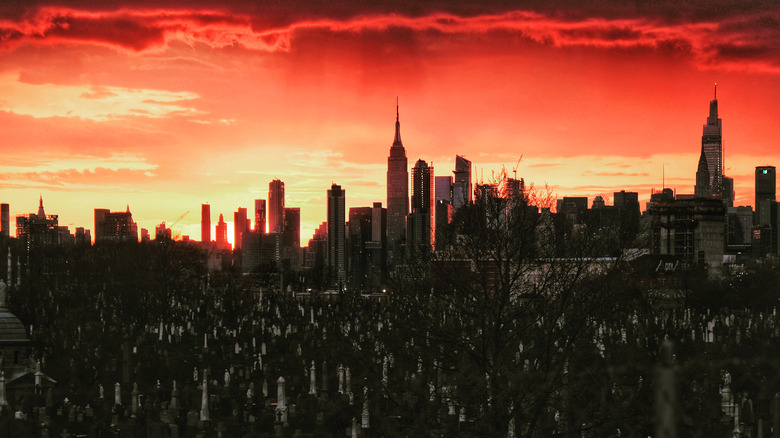When Cemetery Workers In Queens Went On Strike
Within the history of the American labor movement, it's difficult to find workers who never went on strike. From coal miners to sanitation workers, workers in the United States have repeatedly challenged exploitation by their employers, and graveyard workers are no different.
In the mid-20th century, graveyard workers in New York City — which included chauffeurs, gardeners, and gravediggers — went on strike as part of the American labor movement's fight for the eight-hour workday. And although the strike was ultimately unsuccessful, it's notable for being the "first documented strike of Catholic laity against Catholic clergy" (per "Identity's Strategy").
It also wouldn't be the last graveyard worker strike in New York City. In 1973, graveyard workers in over 46 cemeteries in New York, Long Island, and Westchester County went on strike, leaving over 1,400 bodies waiting to be buried for almost an entire month, The New York Times reports. However, unlike the 1949 strike in Calvary Cemetery, which affected only the Roman Catholic church, the 1973 strike also affected Jewish and nonsectarian cemeteries. This is the story of when cemetery workers in Queens went on strike.
Calvary Cemetery in Queens
By the mid-19th century, the island of Manhattan in New York had already started running out of cemetery space. And when it became known that the Rural Cemetery Act was to be passed in 1847 and prohibit the creation of any new burial grounds in Manhattan, a new cemetery was planned for Queens, writes Splice Today.
Calvary Cemetery was named after the site of Jesus Christ's crucifixion, also known as Golgotha. It opened in 1848 between Borden Ave — which became the Long Island Expressway — and Laurel Hill Boulevard. Within 20 years, it was almost full, and as a result, surrounding acres to the east were also purchased.
Calvary Cemetery became the largest Catholic cemetery in New York City, with over 1.5 million people buried there in the 20th century alone, according to "Dorothy Day, Workers' Rights and Catholic Authenticity" by David L. Gregory. And by the end of the 1940s, Calvary Cemetery employed 240 unionized cemetery workers, "the largest number of unionized cemetery workers in the New York Metropolitan area," represented by the United Cemetery Workers.
In December 1948, as their contract was coming to an end, the union pressed for a 40-hour workweek with no pay reduction for their upcoming contract, compared to the 48 hours they were currently working; they also asked for overtime pay. However, in January 1949, after their contract had already expired, the Archdiocese rejected the union's demands and offered a 2.6% wage increase with no time reduction instead.
Gravediggers go on strike
When their requests were rejected, cemetery workers at Calvary Cemetery "voted overwhelmingly to strike" and established a picket line on January 13, 1949. On the first day alone, 35 burials couldn't be completed, and coffins were put into shallow temporary graves, David L. Gregory writes in "Dorothy Day, Workers' Rights and Catholic Authenticity."
By March 1949, there were over 1,000 unburied coffins at Calvary Cemetery, TIME reports. At this point, Cardinal and Archbishop of New York Francis Spellman brought out dozens of priests and seminarians to dig graves as strikebreakers. Cardinal Spellman accused the United Cemetery Workers of being dominated by communists and claimed that they were "unjustified and immoral." According to The New York Times, Spellman also claimed that he was "proud" to be a strikebreaker "because the duty to bury the dead outweighed laws against strikebreaking."
Anarchist journalist Dorothy Day, who co-founded the Catholic Worker, rejected Cardinal Spellman's justification and in March 1949, wrote him a letter in which she stated that the strike was a legitimate display of the workers' "dignity as men, their dignity as workers, and the right to have a union of their own, and a right to talk over their grievances," per her book "All the Way to Heaven."
The anti-communist resolution
Cardinal Francis Spellman repeatedly attacked the United Cemetery Workers for their communist sympathies, calling the strike a "moral issue" (per "Dorothy Day, Workers' Rights and Catholic Authenticity"). He also criticized the union for their affiliation with Food, Tobacco, and Agricultural Workers of America — their parent union — which he described as "a well-known Communist-dominated union." Spellman insisted that if the graveyard workers were represented by another union or by no union at all, then he'd be willing to settle on a contract.
According to the Brooklyn Eagle, the president of the Local 293 union, Joseph Manning, responded that Cardinal Spellman was merely using the same "anti-union tactics used by employers 10 years ago." But Spellman's anti-communist rhetoric was effective towards getting the cemetery unions to shift their union representation. David L. Gregory writes in "Dorothy Day, Workers' Rights and Catholic Authenticity" that by the first week of March 1949, the striking graveyard workers "voted unanimously to disaffiliate with the Food, Tobacco and Agricultural Workers of America." Affiliating instead with the American Federation of Labor (AFL), they were able to settle the strike on March 11. None of their original requests were met, but they were given a slightly higher increase in wages. TIME also reports that each graveyard worker had to take an oath stating that they "as Catholic gentlemen solemnly declare that we are opposed to Communism and all it means in all walks of life."



